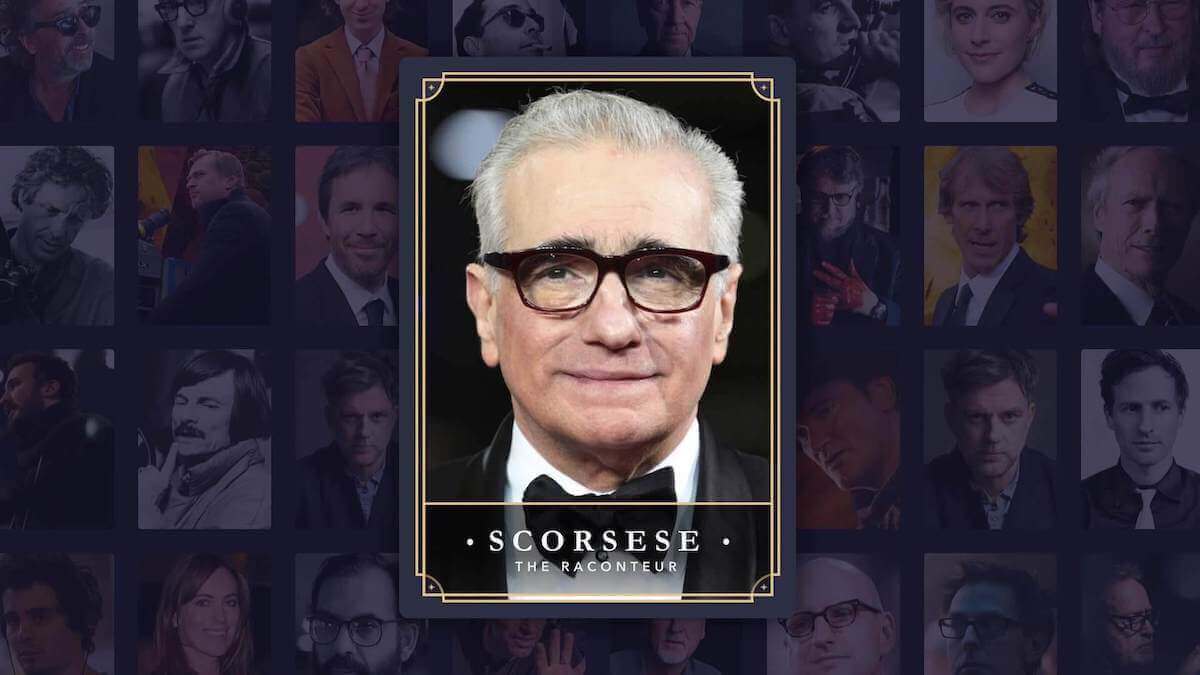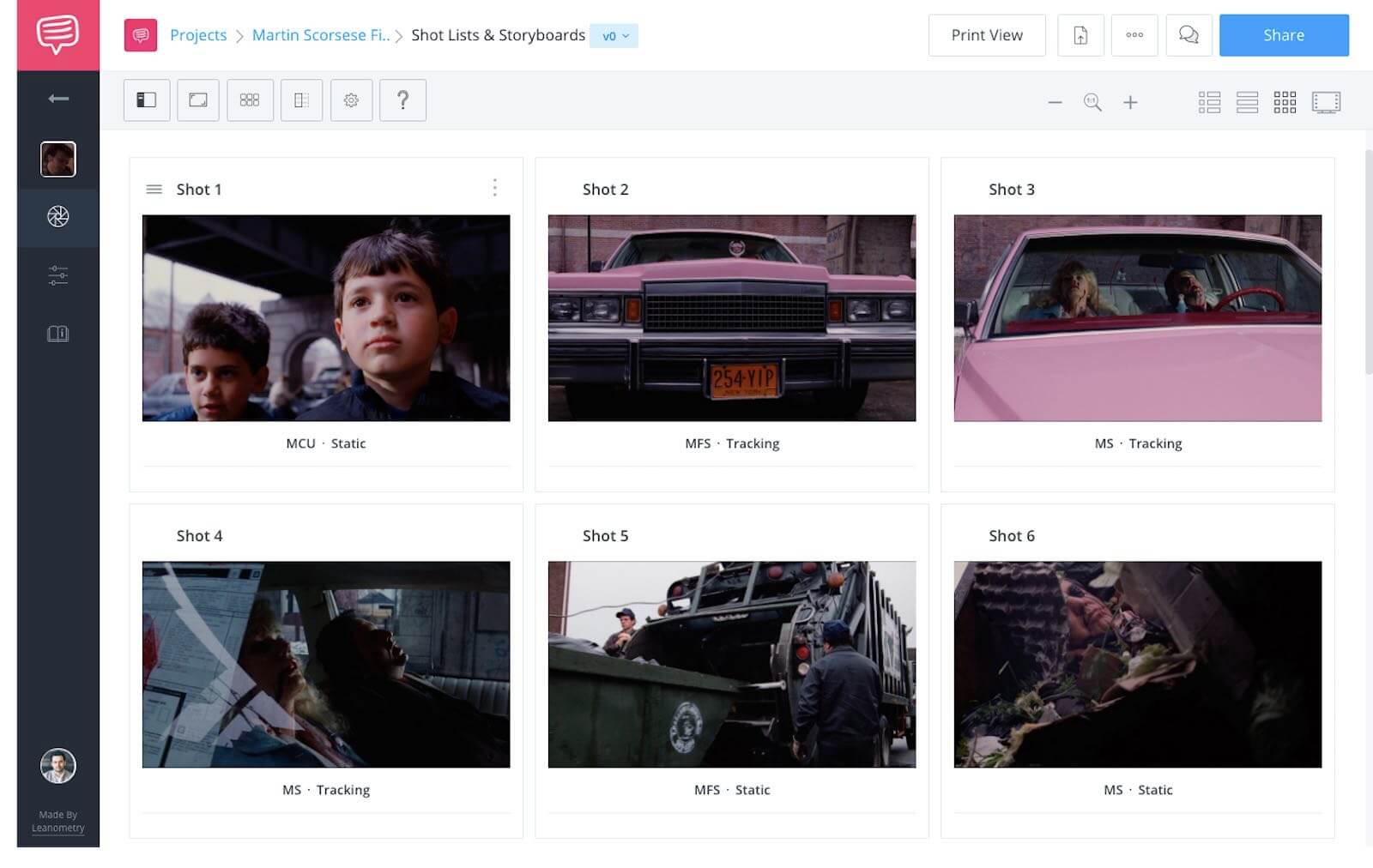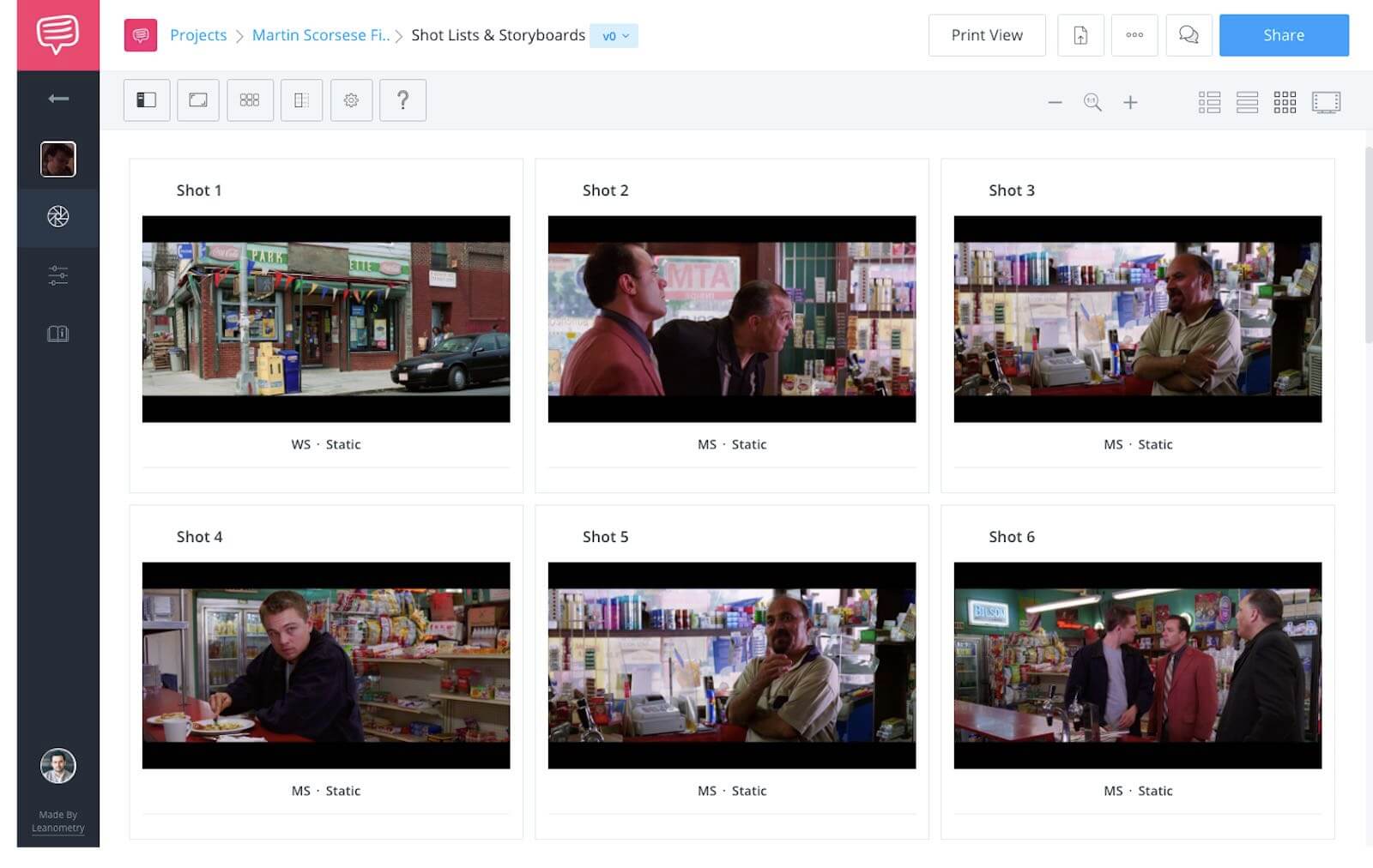Martin Scorsese directed movies make up some of the greatest films ever made. While they seem larger than life, they’re made by a thoughtful craftsman who brings an undeniable style to filmmaking.
In this post, we will quickly look at the Martin Scorsese filmography, and then layout the directing style, script trends, and editing techniques used by Martin Scorsese and his filmmaking teams over the years.
Alright, pictures up.
Best Martin Scorsese Movies
Directing techniques
Martin Scorsese films are important for a number of reasons, one of which is understanding how modern cinema has changed over the years. Martin Scorsese is a pioneer of cinematic techniques, both directing and editing.
Let’s look at some filmmaking techniques from Martin Scorsese films.
USE OF NARRATION & MONTAGE
Martin Scorsese uses montage in many of his films, and often he will accompany these sequences with voice over narration which makes them a bit more robust. You gain a large amount of information, and it helps build the world rather fast.
Casino | Montage
It works rather well on a thematic level, especially when the events that take place within these montage sequences illustrate that certain points in a character’s life seem to occur all at once, as if things simply got out of hand.
DIEGETIC MUSIC & SOUND
Whenever the source of music or sound comes from the world on screen you may safely refer to it as "diegetic sound." This may seem like an obvious concept, but the use of diegetic sound helps to reinforce a more realistic tone.
Scorsese will often blend diegetic sound with non-diegetic, or transition from the musical source on screen to the formal recording on the soundtrack.
This helps to weave his formalist use of cinematic techniques with his realist approach to plot, characters, dialogue, and violence.
WHAT’S IN THE FRAME & WHAT’S OUT
Consider the most famous quote from Martin Scorsese:
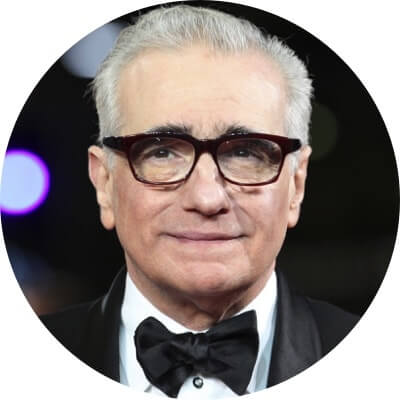
"Cinema is a matter of what's in the frame and what's out."
— Martin Scorsese
Now, this can be taken philosophically, as though cinema is both the final product that we see on screen, but also everything that occurs offscreen that facilitates the production, which includes labor and creativity. And without a doubt in any Martin Scorsese directed movie, you can see the best work both on and offscreen.
Martin Scorsese's AT&T Commercial
A more practical interpretation begs a filmmaker to consider how to use performances, the sequencing of images, and the viewer’s imagination to build a robust and aggressive relationship with the overarching cinematic experience.
If we see this, what don’t we see?
Martin Scorsese Films Explained
Camera techniques
Martin Scorsese is well known for using large camera moves, pans, tilts, zooms, and ambitious camera placement to build a unique cinematic experience.
CAMERA MOVEMENT
Scorsese knows that our connection to the story can be amplified by a specific camera movement. To amplify character reactions, one of his go-to camera techniques is to move the camera towards or away from a subject.
To take the point even further, Martin Scorsese will use the camera movement to almost mimic or replace the character’s reaction, as if the emotions of the character were able to govern the speed and direction of the camera move.
Here's one of Scorsese's most visually dynamic DP's, Robert Richardson, on how meticulous and precise this type of camera movement really is.
Robert Richardson on Working with Scorsese • Subscribe on YouTube
Sometimes he uses quick camera movement, which both supports the fast pace of the specific moments, but also a significant rush of emotion.
Here is a cool video that illustrates some of these points:
Scorsese Camera Movement | Storytelling Twins
He will also use slow camera movement to elongate certain moments, or to represent a form of a character’s curiosity or even dread.
While not technically camera movement, Scorsese is not shy about using zooms to achieve similar effects. He frequently pairs them with quick cuts and movement for a dramatic effect:
Scorsese Zooms
Scorsese directed movies also use camera moves to signal or disguise cuts. This allows him to build multi-layered visuals, multiple shots that seem uninterrupted, or to blend together scene transitions.
For example, if a scene sets up a plan or directly leads into some specific action, Scorsese will use a quick dolly-in to emphasize forward momentum, then cuts.
In doing so, he thrusts us into the next scene with some extra motion.
CAMERA PLACEMENT
Scorsese likes to literally put the camera near the action. So if a subject is on the ground or up in the air, he'll find a way to enhance this moment with exaggerated camera placements.
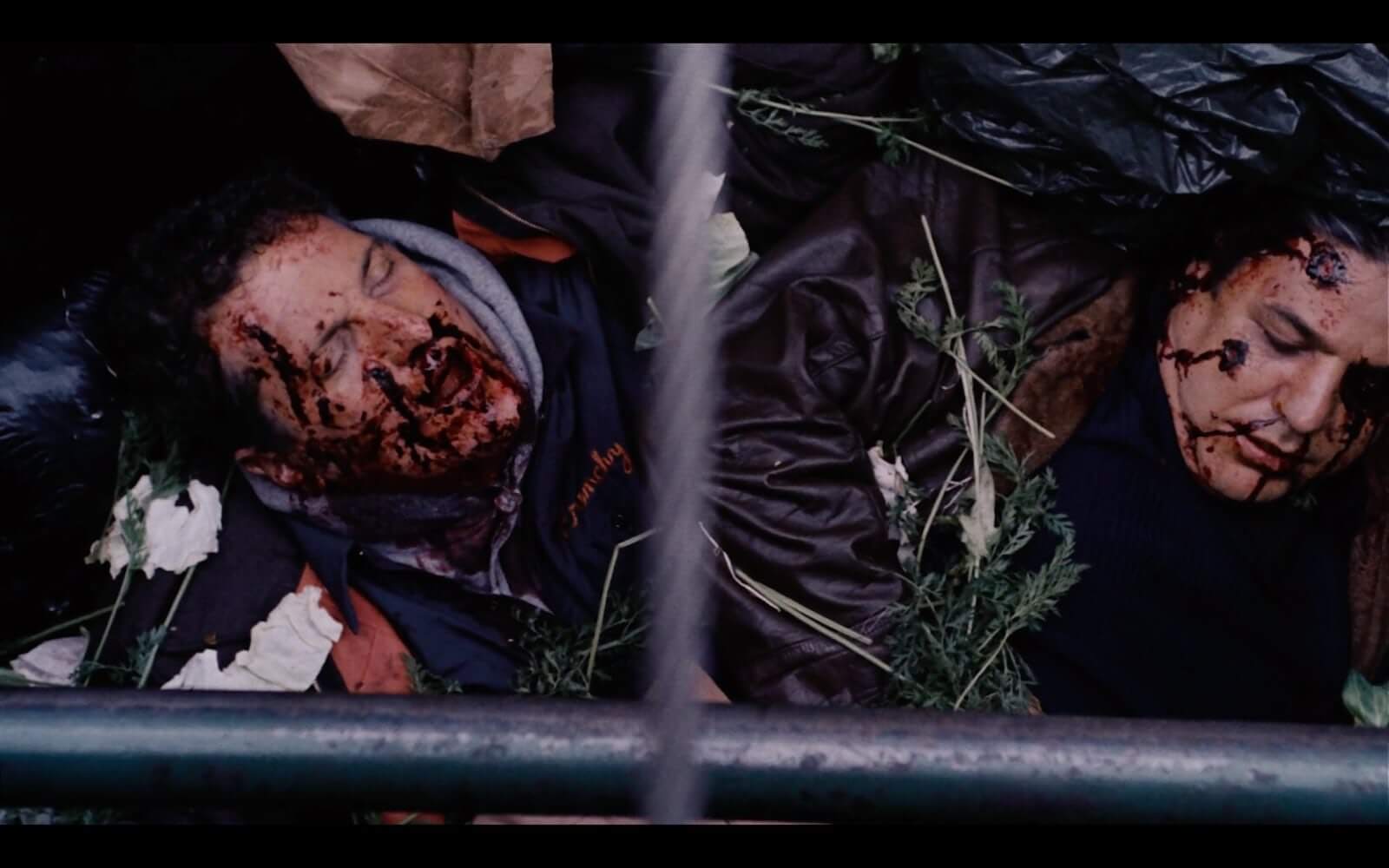
Goodfellas | Gargabe Truck
Martin Scorsese will often use high angle camera placement in his scenes, sometimes for practical reasons so that we may see the action, but also during scenes that feature beat downs or significant violence.
Scorsese will often use overhead shots for many reasons, one of which is a representation of God, sometimes to enhance important moments in the story, but also to support practical story elements in a scene.
Martin Scorsese movies frequently feature level changes; low angles, high angles, overheads, hard dutch angles, and POV shots.
We whipped up a demo shot list. The shot list sample shows you a variety of different camera placements Scorsese uses in his scenes.
As you can see, nothing is off limits.
And more importantly....
His unique camera shots are motivated by character.
LONG TAKES
Martin Scorsese is one of the earliest popular directors to make use of long takes in his films. He used long takes during one of his earliest films, Mean Streets:
Martin Scorsese's Long Takes in Mean Streets
The long takes in this scene do not make up the entire scene like the most popular examples, but you can see Scorsese forming his film style. Scorsese does return to the long take later in his career with The Wolf of Wall Street, which you can explore in this video:
Long Take in WOWS • Subscribe on YouTube
Long takes (aka "oners") have become a favorite for many modern film directors, and Scorsese was one of the early trendsetters in this now-popular cinematic technique.
Here's another great example of a Scorsese oner from The Irishman. This is the very first shot of the film and Scorsese uses the long take to pull us into Frank's world.
Irishman Opening Shot • Subscribe on YouTube
Martin Scorsese Film Style
How Scorsese builds story
Martin Scorsese films range from dramatized accounts of non-fiction, genre films with a Martin Scorsese twist, and stories of religion.
Let’s look at some of the trends in Scorsese films.
FLAWED CHARACTERS IN AN IMMORAL WORLD
Martin Scorsese films use characters that are deeply flawed, and tend to either be haunted by past deeds, or highly self-destructive. The character development in his movies are often like rollercoaster rides that take a deep toll on the protagonist's emotional and psychological well-being.
Scorsese selects worlds that are conducive to immoral behavior, and he can place otherwise moral characters inside these immoral situations.
Often Scorsese films will include a character that thrives in an immoral world. These characters reap what they sow, even if they are the ‘hero’.
The characters in Martin Scorsese movies may seem to receive a somewhat glamorous treatment, but ultimately it always comes back to bite them.
The Lemmons | The Wolf of Wall Street
GRITTY STORYLINES & AMBIGUOUS ENDINGS
Martin Scorsese loves to use voice over narration with real life figures in films like Goodfellas, Casino, and The Wolf of Wall Street. He also uses the audio track from other scenes as a form of voice over for scenes that do not share the same time period nor the general location - he thinks in cinematic terms.
Scorsese doesn’t limit his films, and uses filmmaking techniques to support his story rather than adhering to strict logic or "narrative rules."
Scorsese will often use scenes where the hero and villain meet, which is a great way to take advantage of built in source of conflict, but it also shows how these characters have highly interconnected lives with one another.
Martin Scorsese tends to end his films with a neutral tone, or at the very least an ending that does not suggest some resounding form of resolution or change. This may run contrary to classical storytelling structure, but it's a big part of what defines and separates Martin Scorsese's movies. There is ultimately some change, but it’s not necessarily progress, but rather a result that encapsulates the futile nature of a specific world or character.
AUTHENTIC TONE
Martin Scorsese movies feature worlds, plots, and characters that are highly stylized representations of the specific topic of a particular film. It all combines to create something that many would consider highly authentic.
The magic of his films arise from his bold manipulations of formal techniques; editing, camera movement, sound design, performance direction, and the drastic story events. All of this exaggerated techniques combine to create a heightened, dramatic world that, ironically, comes across as authentic and highly realistic.
How ‘Scorsese’ is Silence
How many real-life beat down scenes have you witnessed?
Hopefully, not too many.
But when you watch Martin Scorsese films you see these moments all the time, and you believe his characters are capable of these actions.
The last point on Scorsese tone is that the vast majority of his films are rated R. This isn’t to say that his films are particularly crass or gratuitous with regard to the subject matter, but they are very often ‘films for adults’.
Related Posts
Auteur Theory Made Practical
Explore directing techniques used by the greats
Create works like these iconic auteur directors. Explore practical directing tips you can immediately put into action on your next project
EXPLORE Auteur Directors
Martin Scorsese Film Editing
Scorsese's approach to editing
Martin Scorsese movies may be easily identified by the way they are cut. While Scorsese has a large say in the edit, he owes much of his success to his longtime collaborative partner, Thelma Schoonmaker. One of the first things Scorsese looks at with his edit is the title sequence:
Thelma Schoonmaker Editing with Scorsese • Subscribe on YouTube
Scorsese says he finds title sequences to be rather important for a film to achieve a certain level of effectiveness. Let’s look at a great Martin Scorsese title sequence.
Check out the video below. Not only is there a nice lead in, but the music and the images represent the setting, support the theme, and create a sense of looming damnation.
Casino Title Sequence
QUICK CUTS
When you analyze Martin Scorsese movies and techniques used by his editor, Thelma Schoonmaker, you come to find that they do one thing really well…
They skip the dull moments.
This can mean a lot of different things, but mainly it refers to keeping the actions rather tight, but also bridging moments and combining scenes.
Goodfellas | Helicopter Scene
One thing Martin Scorsese movies are known for is flash bulb cuts, where a light flash will blind the frame for a moment which allows the next clip to be seamlessly introduced, and thus inject the scene with some energy.
Martin Scorsese movies also makes great use of quick cuts.The Departed Fight Scene
These can be used for many reasons, one of which is to startle and scare the viewer. This may seem like a technique most useful for genre films, but it can be used in any case — since fear is not exclusive to genre films.
Scorsese will also use quick cuts to amplify violence, which can shrink the time between each strike, as well as supporting the energy of the scene. Violence is very seldom expected in real life moments, so the speed of the cuts and the violence simulate someone losing their temper.
The shot list below will show each unique shot setup so that you can track exactly how Scorsese build a high energy fight scene:
SPEED RAMPING
Martin Scorsese movies will often change the frame rate speed so that they may slow the motion of a particular shot or sequence.
This includes slow motion, fast motion, and freeze frames.
When does Martin Scorsese use slow motion in his films?
Often, he reserves slow motion for truly definitive moments.
He knows these are important moment sin his script, so he makes sure the viewer knows this as well by using cinematic techniques to his advantage.
Martin Scorsese movies will often use fast motion or simply speed up clips during outbursts of violence, and this, paired with sudden cuts gives the audience a very energetic and effective viewing experience.
Maybe the hits don’t register as well without the extra motion, or maybe it was something Scorsese premeditated - who knows.
If it works… it works.
Goodfellas | Billy Batts Scene
SUBVERTING SOUND & MUSIC
Just as Martin Scorsese movies make use of slow motion during definitive moments, they often pair these moments with complete silence.
Any musician will tell you that silence is an instrument, and that the absence of sound is just as important as big, swelling crescendo.
Just as cinema is a matter of what’s in the frame and what’s out…
Sound is a matter of what we can hear, and what we can’t hear.
Martin Scorsese - The Art of Silence
The final point on Martin Scorsese movies may be the most recognizable: His use of music.
It has been said that Scorsese and Schoonmaker cut these films to the music that is eventually used. This is probably not the case for a film like Silence or Hugo, but for some of his more stylized films it seems to be true. Scorsese himself admits that music is a very large creative influence on his narrative flow.
And he's a master of subverting musical choices, sometimes setting uplifting music to extreme violence, or aggressive, driving songs against subtle actions.
This constant questioning of tradition and technique is a big part of what makes a Martin Scorsese movie into... A Martin Scorsese Movie.
Martin Scorsese Movies List
Filmography
Martin Scorsese has directed shorts, feature films, and documentaries, but for today’s post we will focus purely on the feature films directed by Marty, starting with the most recent.
THE IRISHMAN (2019)
A mob hitman recalls his possible involvement with the slaying of Jimmy Hoffa.
The Irishman Teaser
SILENCE (2016)
In the 17th century, two Portuguese Jesuit priests travel to Japan in an attempt to locate their mentor, who is rumored to have committed apostasy, and to propagate Catholicism.
THE WOLF OF WALL STREET (2013)
Based on the true story of Jordan Belfort, from his rise to a wealthy stock-broker living the high life to his fall involving crime, corruption and the federal government.
The Wolf of Wall Street Trailer
HUGO (2011)
In Paris in 1931, an orphan named Hugo Cabret, who lives in the walls of a train station, is wrapped up in a mystery involving his late father and an automaton.
SHUTTER ISLAND (2010)
In 1954, a U.S. Marshal investigates the disappearance of a murderer, who escaped from a hospital for the criminally insane.
Shutter Island Trailer
THE DEPARTED (2006)
An undercover cop and a mole in the police attempt to identify each other while infiltrating an Irish gang in South Boston.
The Departed Trailer
THE AVIATOR (2004)
A biopic depicting the early years of legendary Director and aviator Howard Hughes' career from the late 1920s to the mid 1940s.
GANGS OF NEW YORK (2002)
In 1862, Amsterdam Vallon returns to the Five Points area of New York City seeking revenge against Bill the Butcher, his father's killer.
Gang’s of New York Trailer
BRINGING OUT THE DEAD (1999)
Haunted by the patients he failed to save, an extremely burned-out Manhattan ambulance paramedic fights to maintain his sanity over three fraught and turbulent nights.
KUNDUN (1997)
From childhood to adulthood, Tibet's fourteenth Dalai Lama deals with Chinese oppression and other problems.
CASINO (1995)
A tale of greed, deception, money, power, and murder occur between two best friends: a mafia enforcer and a casino executive, compete against each other over a gambling empire, and over a fast living and fast loving socialite.
Casino Trailer
THE AGE OF INNOCENCE (1993)
A tale of nineteenth-century New York high society in which a young lawyer falls in love with a woman separated from her husband, while he is engaged to the woman's cousin.
CAPE FEAR (1991)
A convicted rapist, released from prison after serving a fourteen-year sentence, stalks the family of the lawyer who originally defended him.
GOODFELLAS (1990)
The story of Henry Hill and his life in the mob, covering his relationship with his wife Karen Hill and his mob partners Jimmy Conway and Tommy DeVito in the Italian-American crime syndicate.
Goodfellas Trailer
THE LAST TEMPTATION OF CHRIST (1988)
The life of Jesus Christ, his journey through life as he faces the struggles all humans do, and his final temptation on the cross.
THE COLOR OF MONEY (1986)
Fast Eddie Felson teaches a cocky but immensely talented protégé the ropes of pool hustling, which in turn inspires him to make an unlikely comeback.
AFTER HOURS (1985)
An ordinary word processor has the worst night of his life after he agrees to visit a girl in Soho who he met that evening at a coffee shop.
THE KING OF COMEDY (1982)
Rupert Pupkin is a passionate yet unsuccessful comic who craves nothing more than to be in the spotlight and to achieve this, he stalks and kidnaps his idol to take the spotlight for himself.
RAGING BULL (1980)
The life of boxer Jake LaMotta, as the violence and temper that leads him to the top in the ring destroys his life outside of it.
Raging Bull Trailer
NEW YORK, NEW YORK (1977)
An egotistical saxophonist and a young singer meet on V-J Day and embark upon a strained and rocky romance, even as their careers begin a long, up-hill climb.
TAXI DRIVER (1976)
A mentally unstable veteran works as a nighttime taxi driver in New York City, where the perceived decadence and sleaze fuels his urge for violent action by attempting to liberate a presidential campaign worker and an underage prostitute.
Taxi Driver Scene Breakdown • Subscribe on YouTube
ALICE DOESN’T LIVE HERE ANYMORE (1974)
A recently widowed woman is on the road with her precocious young son, determined to make a new life for herself as a singer.
MEAN STREETS (1973)
A small-time hood aspires to work his way up the ranks of a local mob.
BOXCAR BERTHA (1972)
During the Great Depression, a union leader and a young woman become criminals to exact revenge on the management of a railroad.
WHO’S THAT KNOCKING AT MY DOOR (1967)
A young man struggles with the fact that his girlfriend was once raped.
UP NEXT
How to make a shot list
Now you know a bit more about Martin Scorsese movies, and you have seen how much each shot counts in every scene you build. Now it is time to shot list your next great scene. Take a look at guide to shot lists. We also feature a free shot list template to use on your next film.
Up Next: How to Plan a Shot List [FREE Template] →
Auteur Theory Made Practical
Explore directing techniques used by the greats
Create works like these iconic auteur directors. Explore practical directing tips you can immediately put into action on your next project
EXPLORE Auteur Directors
Showcase your vision with elegant shot lists and storyboards.
Create robust and customizable shot lists. Upload images to make storyboards and slideshows.
